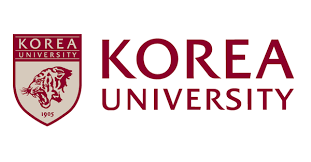Breaking Barriers in Cancer Treatment and Imaging: Innovative Strategies for Next-Generation Therapy via In Situ Self-Assembly
An international joint research team, consisting of Professor Kim Jong-seung of the Department of Chemistry in the College of Science, Professor Kang Hee-min of the Department of Materials Science and Engineering in the College of Engineering, and Professor Kanyi Pu of the Department of Chemical Engineering at the Nanyang Technological University, published a review article about the various approaches to the maximization of cancer therapy and cancer cell imaging efficiency through in situ self-assembly in Nature Reviews Materials (IF=83.5) on August 29.
– Title of article : In situ self-assembly for cancer therapy and imaging
The functional nanomedicine prepared by conventional ex situ self-assembly has limitations in its therapeutic effects and functions. For example, ex situ self-assemblies were found ineffective in both the induction of cancer cell apoptosis and the targeted diagnosis of cancer cells because they have poor tumor penetration and poor blood circulation.
The research team explained that in situ self-assembly-based cancer treatments offer various advantages, including the enhanced blood circulation of monomers, low drug resistance, and the ability to target deep tumors and organelles. Contrasting conventional treatments, the cancer treatment platform based on the in situ self-assembly approach is considered to be a new level nanomedical technology able to both induce improved selective cancer cell apoptosis and implement effective solid tumor imaging for cancer diagnosis and excisional surgery.
The article covered all the latest in situ self-assembly approaches for cancer therapy and imaging based on various endogenous and exogenous stimuli in both the intracellular and extracellular milieu. The self-assemblies formed inside and outside the cells can effectively cause cancer cell apoptosis by inducing mechanical stress, an approach which has not been discussed in previous studies. The article highlighted selective cancer therapy through the binding of cancer cell targeting materials to monomers and the improved deep-tumor penetration effect. Furthermore, the article described the working principle of dynamic transformations, which are unique to nanostructures self-assembled in situ, and their advantages from the clinical viewpoint. The research group explained, “The approach is not simply for producing in situ self-assemblies through a single stage but for sequentially designing the self-assembling process so that cancer cell apoptosis efficiency can be maximized and drug resistance and side effects can be reduced.”
Professor Kim Jong-seung of the Department of Chemistry and Professor Kang Hee-min of the Department of Materials Science and Engineering, the corresponding authors of the article, commented, “From a clinical point of view, in situ self-assembly nanomedicine is a next-generation technology that can provide the ultimate alternative to the exiting cancer therapies.” They added, “We hope that our review article can help all researchers in the field of nanomedicine to establish the foundation for high-efficiency, side effect-free cancer therapy and diagnosis by developing strategic cancer-cell-targeted drug precursors through in situ self-assembly.”
*Self-assembly: The term ‘self-assembly’ collectively refers to the processes by which disordered monomers spontaneously form a certain pattern or high-dimensional structure by interactions among components in the absence of additional stimuli.
The research was supported by the Research Leader Program and the Mid-Career Researcher Program of the Ministry of Science and ICT(MSIT) and the National Research Foundation of Korea.

